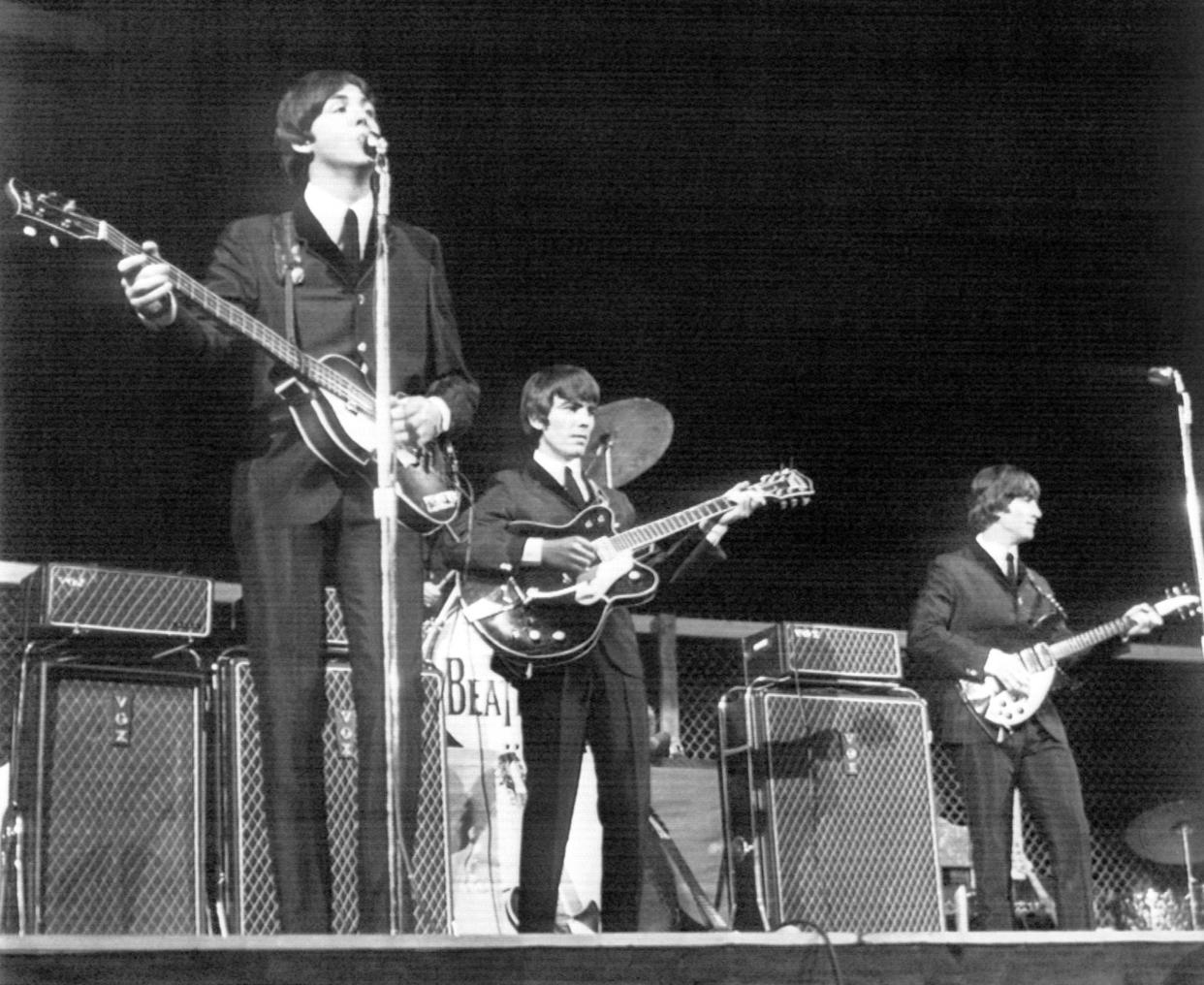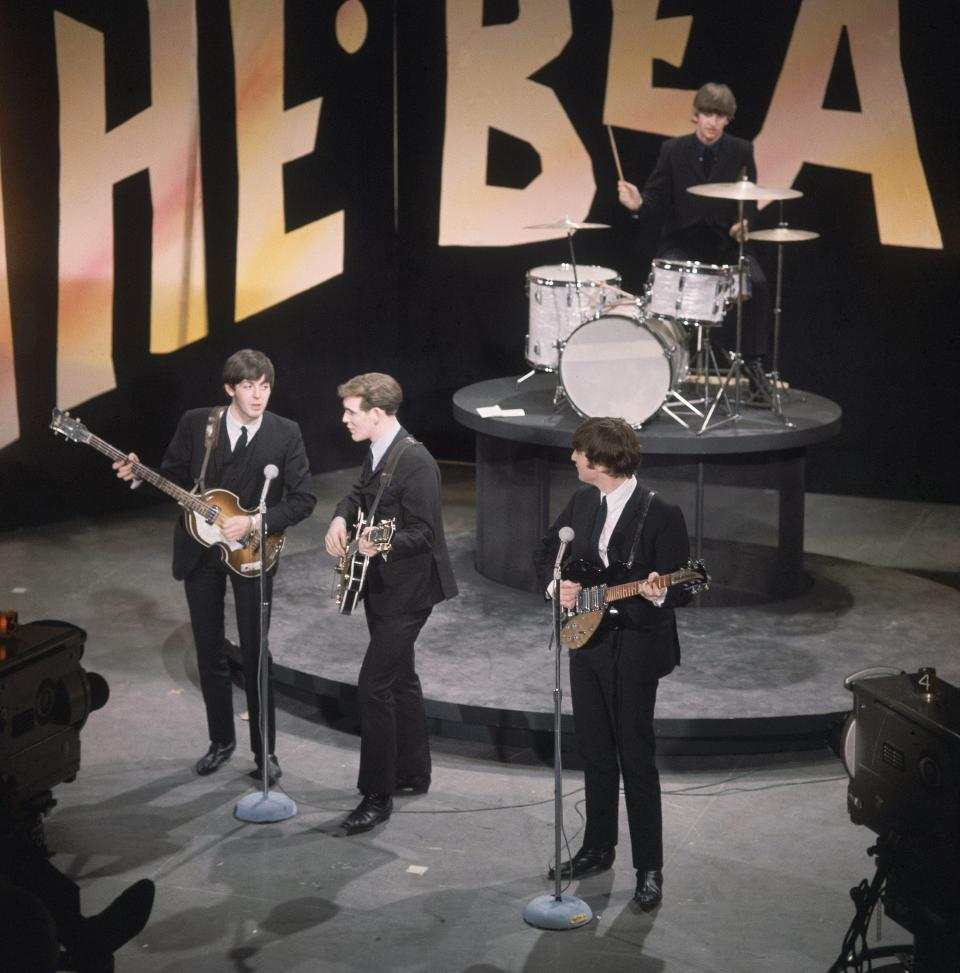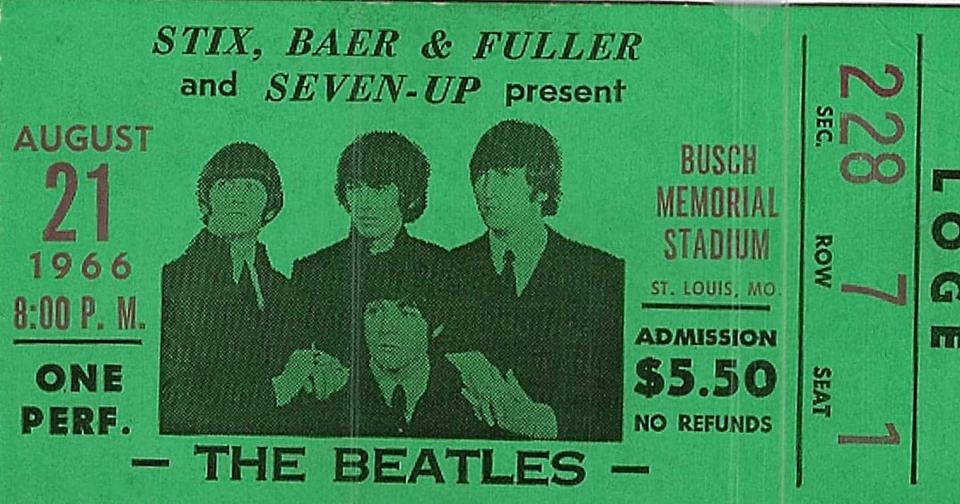The Beatles appeared on 'Ed Sullivan' 60 years ago, and music changed

- Oops!Something went wrong.Please try again later.
- Oops!Something went wrong.Please try again later.
- Oops!Something went wrong.Please try again later.
- Oops!Something went wrong.Please try again later.
- Oops!Something went wrong.Please try again later.
The Beatles arrived in America 60 years ago this week, changing American music and culture.
And they caught Dennis Hodo's imagination.
The Beatles — John Lennon, Paul McCartney, George Harrison and Ringo Starr — appeared on "The Ed Sullivan Show" on Feb. 9, 1964. The 73 million viewers saw them perform five songs: "All My Loving," "Till There Was You," "She Loves You," "I Saw Her Standing There," and "I Want to Hold Your Hand."
Pandemonium that already had been labeled Beatlemania in Britain greeted them when they arrived at New York's Kennedy Airport on Feb. 7. There, they appeared for their first U.S. news conference.
"Will you sing something?" a reporter asked.
"No," they replied in unison, with Lennon then adding: "No, we need money first."
Hodo, his mom and two brothers watched The Ed Sullivan Show that Sunday in their living room in Doniphan. Hodo was 13 and overwhelmed by the experience, he said.
"It was life-changing," said Hodo, a local musician.
Within a short time, he and his brothers had guitars and drums, he said.
He had first heard "I Want to Hold Your Hand" in December. It had gone to No. 1 in the U.S.
"They were just having fun and making great music," said the 73-year-old Hodo. "It was the first time in my life I was struck by something."
Terry Smith, now a political science professor at Columbia College, was a student at Central Methodist University when the Beatles became big in the U.S. Someone in his dorm told him he had to hear this record, "Meet the Beatles," their first U.S. album.
"I knew I had never heard anything like it," Smith said.
And then, their appearance on "The Ed Sullivan Show."

"We watched Ed Sullivan," Smith said. "It was just kind of fun, their irreverent, cheeky group that was taking the world by storm and it was fun. And their music was really good."
The music was singable and playable, he said.
"I think the country was ready for something like this," Smith said.
On Feb. 11, The Beatles performed their first U.S. concert at Washington Coliseum in the nation's capital with an audience of more than 8,000, most of them screaming at the top of their lungs. The entire concert is on YouTube, just 20 minutes or so.
By the summer, the Beatles had their first U.S. tour, including their first Missouri concert as "A Hard Day's Night," their first film, was in theaters.
They added Kansas City to the tour only after Charlie Finley, owner of the Kansas City Athletics, offered them $150,000, a record at the time. There were 20,000 in the audience but it was their only concert on the tour that didn't sell out.
They spent a day at a ranch in Alton after the show.
Durig their final tour in 1966, Busch stadium in St. Louis was a stop. Dennis Hodo was there with a carful of friends and brothers. The concert was held during a thunderstorm and Hodo was seated directly under a public address speaker, which served as the stadium's sound system. He could discern a few snippets of a few of the songs over the screaming, he said.

The St. Louis concert was their second of the day, after having performed that afternoon in Cincinnati.
The tour ended a few weeks later with a concert in San Francisco. From that point, they concentrated on recording.
That was the year the Beatles released "Revolver" which Smith said is his favorite Beatles album. He was in graduate school at the time.
Revolver had been released before the 1966 tour started, but they didn't perform any songs from it on their tour.
The Beatles, from Liverpool, England, gained skills during long hours performing in clubs in Hamburg, Germany, said University of Missouri music professor Peter Zambito.
"They were putting their own spin on it and incorporating so many different styles," Zambito said.
Before they arrived, the music included a dance music craze. Pre-Motown, the Beatles covered several songs by Black girl groups of the day. Beach music also was big, Zambito said.
"They were a huge fan of the girl groups and it showed up on their earliest recordings," Zambito said.
An example is "Chains," on the Beatles first British album, "Please Please Me." Originally recorded by the Cookies, it was written by Gerry Goffin and Carole King. Lennon and McCartney aspired to the be like Goffin and King in their songwriting.
"They were starting to get into U.S. culture and once they were booked on Ed Sullivan and put out 'I Want to Hold Your Hand' the audience was ready for them," Zambito said. "It seemed like literally the whole country watched and it just exploded from there."
He plays the opening clip of the Beatles on "The Ed Sullivan Show" in many of his classes, Zambito said.
"The way that people respond to them, the way they look at the audience and the audience looks at them — not just teenagers — they're all fascinated watching them."
The Beatles broke up in 1970, followed by years of solo hits from each of them individually. Lennon was murdered in 1980, when he was 40. Harrison died of cancer in 2001, at age 58.
And yet, they don't fade, the sources said.
"The endurance of the Beatles is something that's remarkable," Smith said.
His children and grandchildren know about the Beatles and are fans, he said.
"The music doesn't go away at all," Hodo said.
Roger McKinney is the Tribune's education reporter. You can reach him at rmckinney@columbiatribune.com. He's on X at @rmckinney9.
This article originally appeared on Columbia Daily Tribune: The Beatles' 'Ed Sullivan' debut 60 years ago changed music, culture

